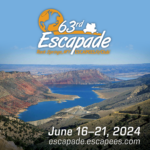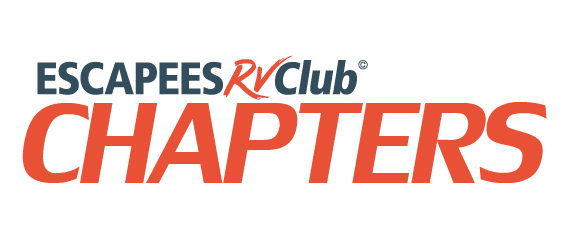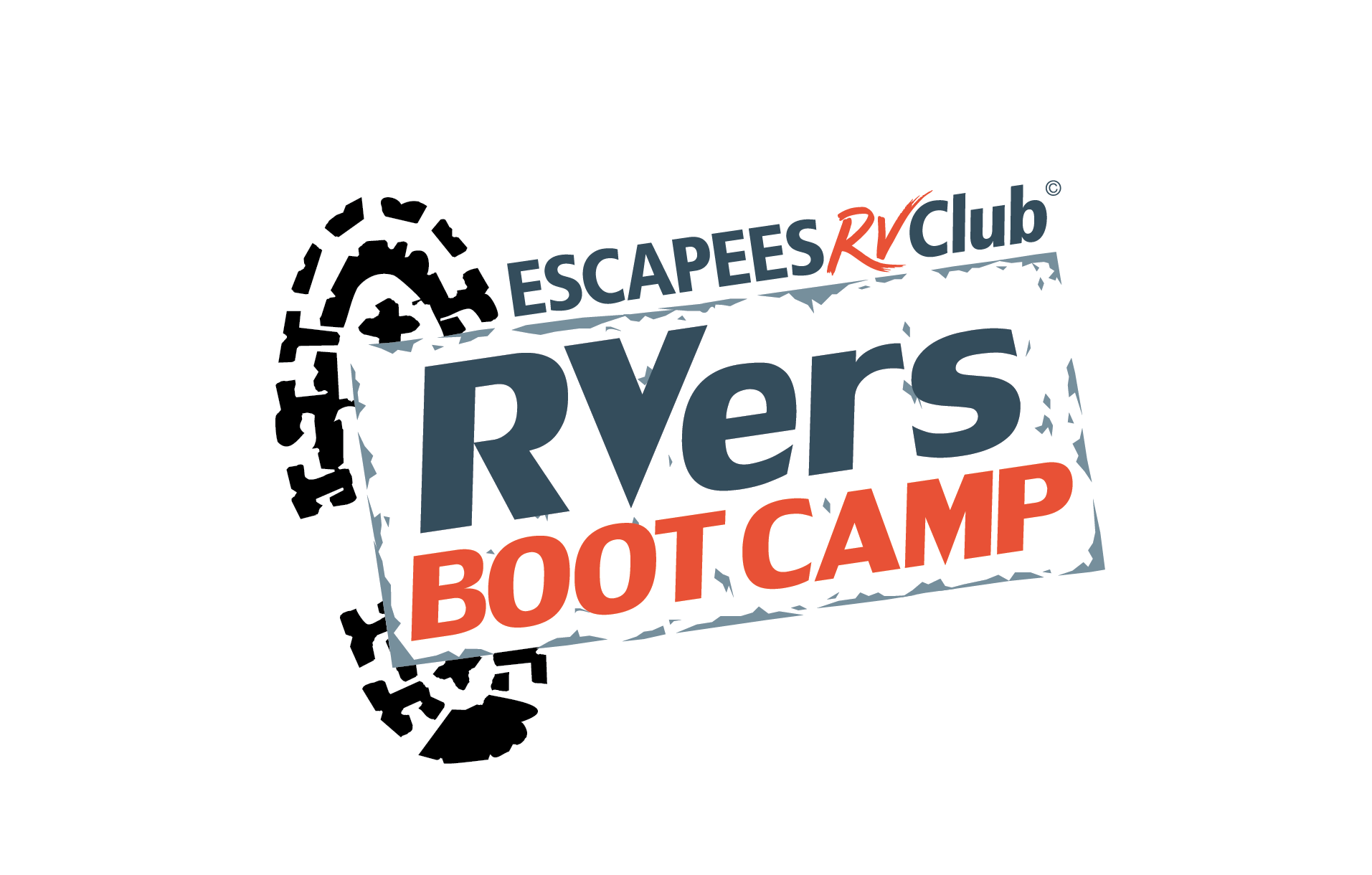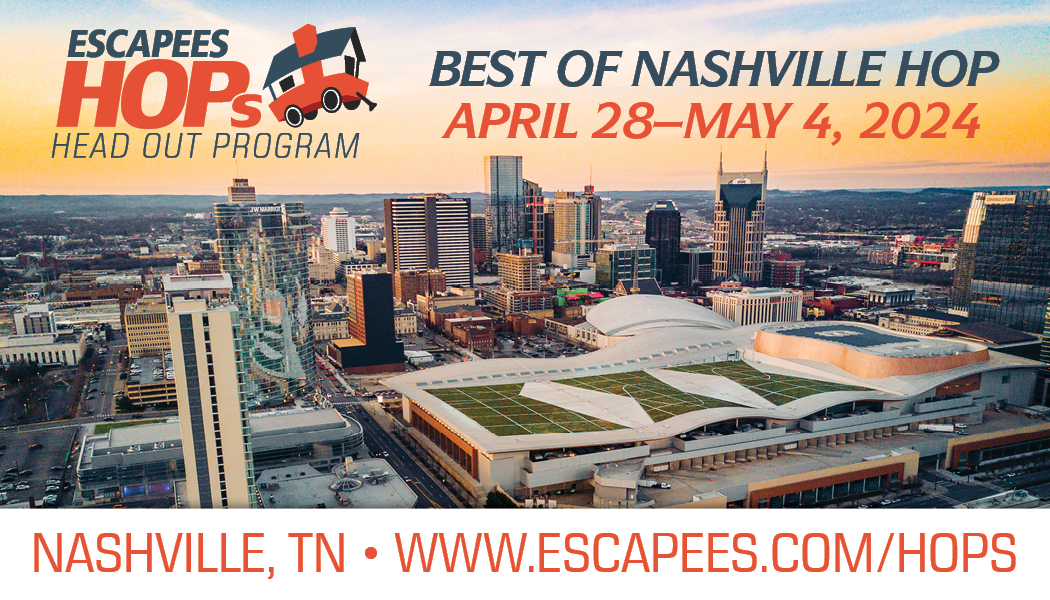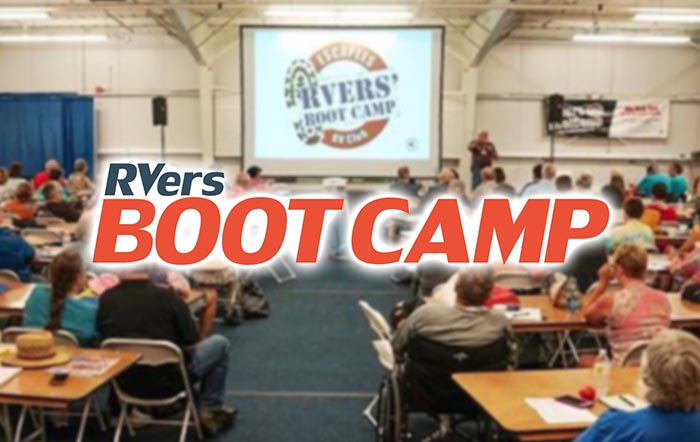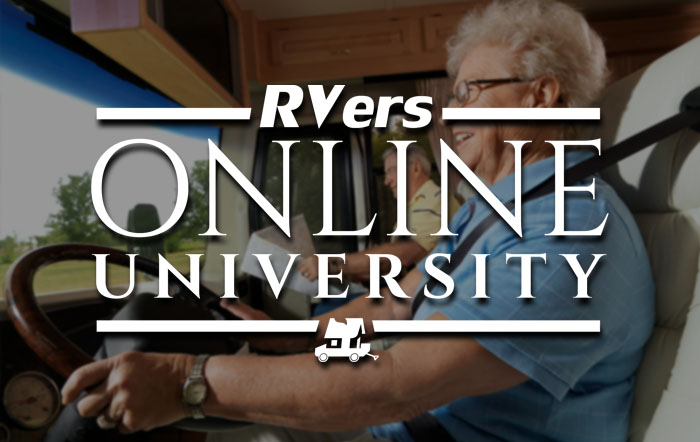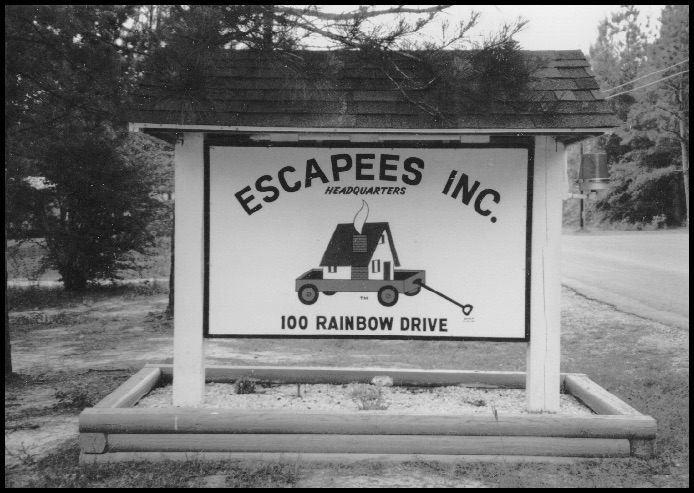
Escapees RV Club was founded in 1978. In the four decades since, so much has happened to move the club forward and grow both the membership and the services and benefits that members enjoy. With so many of our founding members now off the road and enjoying a quieter life, we want to ensure their stories and legacy are shared with newer club members. If it weren’t for our founding Escapees, this club would be an entirely different organization, if we even existed at all.
In this edited excerpt from History of the Escapees Club, Part III in a series on Escapees’ history, Kay Peterson, co-founder of Escapees RV Club, shares more about how the network of Escapees-owned RV parks developed with the help of volunteers. (If you haven’t read Part I, we recommend you start here. Part II is here.)
Corporation vs Non-Profit
Because of the club’s growth in the 80s, and the proliferation of SKP Co-Ops, we were advised to incorporate the club, both for our own liability protection and as an assurance to the members that the club would still be there for them after Joe and I died. So, in January 1986, we incorporated as a for-profit corporation named Escapees, Inc.
On the other hand, SKP Co-Ops were set up as nonprofit because we did not want people buying a membership for investment purposes. The whole point of having SKP Co-Ops was to make an affordable home base for those Escapees members who wanted it, and at the same time, to provide short-term parking for all traveling members of Escapees.
A nonprofit corporation is not owned by anyone. The individuals connected with the corporation cannot make any profit and there are no dividends. We wanted those who bought a membership in any SKP Co-Op to be able to use the assigned lot for their entire lifetime, or any part thereof, and get their money back if they chose to withdraw. We believed there would always be new members waiting to take their place, which was the reason for establishing waiting lists.
Problems With The SKP Co-Op System
Throughout the 80s, chapters continued to form and almost simultaneously started SKP Co-Ops. We said that, when the planning board was satisfied the selected property would serve its intended purpose, the board should come up with an estimated cost per SKP Co-Op membership and announce it first to the chapters then to the entire Escapees membership through the Escapees newsletter.
After several attempts at new Co-Ops failed, we needed a new plan. It was always intended that SKP Co-Ops would serve two purposes. The first purpose– providing a home base for those who chose to buy a membership in that corporation– worked perfectly. But the second intended purpose of the SKP Co-op—providing short term parking for traveling members—was a failure. Our idea had been that, when the leaseholders were traveling, visiting Escapees could rent their lots. This worked for the first year or two, but each year after that was harder for traveling Escapees to find a place to rent in the SKP Co-Op parks. There were several reasons for this.
The Escapees membership was increasing, so there were more traveling members. At the same time, those who had an SKP Co-Op membership were spending more time at their home base. Some had traded for a larger RV, which they set up permanently so it would always be ready for their return, and then they purchased a smaller rig for travel because they were spending less time on the road. This meant their lot was not available to renters. And there were some who simply did not want anyone using their lot. Added together, the SKP Co-Ops were only providing a few of the short-term rentals that club members wanted to use.
Since the SKP Co-Op plan was not meeting the needs of traveling members, we would need to develop a different plan. As directors of the club, our concern was—and always will be—to do what is best for the club as a whole. That is the only way it can remain strong and healthy and continue to stand the test of time. Unfortunately, what is best for the whole may step on the toes of a few special-interest groups.
Member-Owned Retreats
As far back as 1980, individual Escapees members were inviting other members to park on their property. This was originally done through a notice in the “Road Roamer News” sections of the newsletter. The program expanded to include a few places where members could stay for up to a month. The first of these was in Vader, Washington, on property owned by Ray and Agnes Parish #864. Ray and Agnes offered electricity and water and they had an old barn they let members use as a temporary clubhouse if several couples were there at the same time.
People also needed a place to dump their holding tanks, so Ray asked the town officials if they would agree to put in a dump station, provided Escapees paid for it. The town council agreed to do the installation and maintenance. Some appreciative members who had stayed at Vader left a donation towards this, and the Escapees Club sent a check to the town of Vader for the balance of the cost.
Two other retreats came into being during the mid-1980s. There were also two commercial parks, one in Port Orford, Oregon and the other in Kamiah, Idaho, that allowed Escapees to dry-camp free for one or two nights and also offered a discount for anyone wanting to stay in a full hook-up site.
Since the earliest days, some Escapees members who seldom travel invited travelers to park overnight on their property. This led to the publication of “Overnight Parking For SKPs with SKPs,” later shortened to “Parking with SKPs.” (This information can now be found at https://member.escapees.com/map/, designated in the Mapping Tool by the red “overnight parking” icons.)
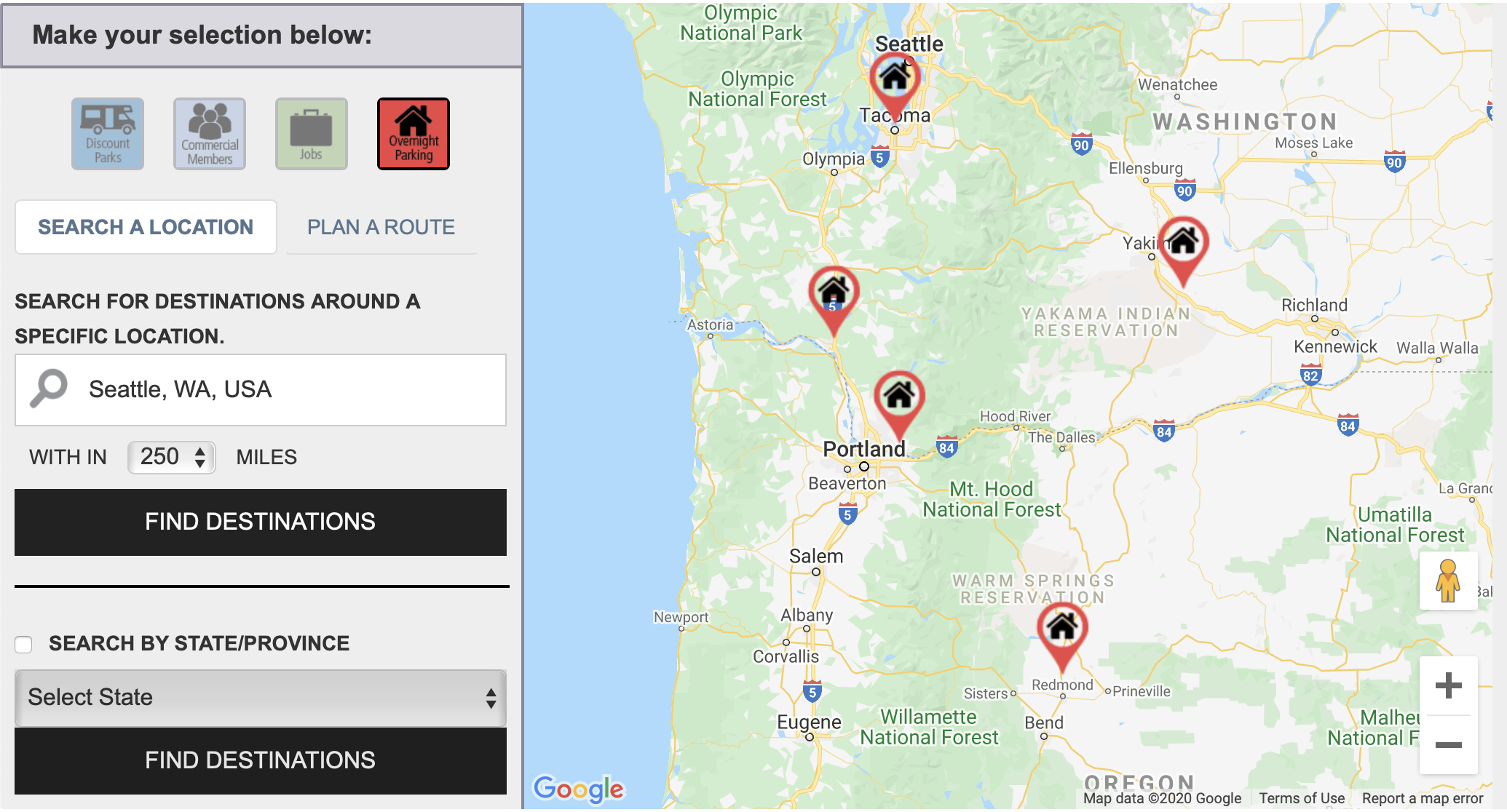
The Rainbow Retreat Plan
With the new focus on traveling members as well as home bases, we set up a Rainbow Retreats plan. We needed to sell lots for home bases in order to pay for the land, roads, clubhouse, and campground services. The shareholders elected Bud Carr to be president of a new corporation called Rainbow Parks, Inc. His duties included overseeing all construction and development of the new type of Escapees parks. Along with Bud, Jim and Penny Scott share the responsibility of finding new parks and developing and improving them to fit our needs. They are also in charge of finding and training manager teams to run the Rainbow Parks.

The announcement in the July/August 1991 newsletter, stating there would be no more parks built under chapters, stopped most of the land search in south Texas, north Florida, and Arizona. However, for the next year a few small groups persisted in trying to start a co-op in the area where they wanted to live. Gradually, talk of these co-op ventures died, but to this day, there are members who try to get us to bring back the SKP Co-Op plan.
The new retreat plan was modeled after Rainbow’s End. It would include two sizes of deeded lots. Small lots would be similar to those in the SKP Co-Ops, with some building restrictions, and would have hookups completed before being sold. The large lots, generally ¼ acre, would have fewer building restrictions, and the hookups would only be brought to the edge of the lot. It would be up to the lot owner to bring them to wherever it best suited the building plans.
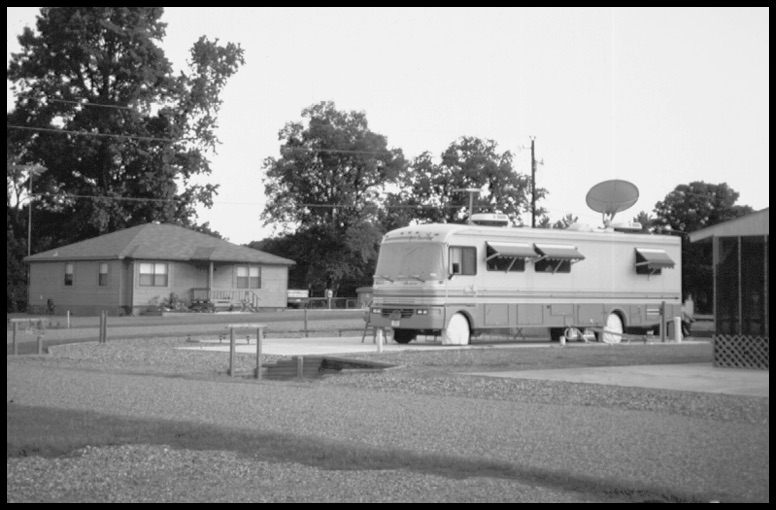
We did this because we knew age and illness were keeping many Escapees from traveling the way they once had. Their home base lot would become more important as age and failing eyesight forced them to retire from the road. Larger lots provided the freedom to build an RV chalet that could later be incorporated into a house. Instead of an SKP Co-Op membership with lifetime entitlement to use an assigned lot, these would be deeded lots that the buyers would own outright. This meant that, instead of paying an annual fee to a corporation that paid for maintenance, insurance, and taxes, each lot owner was responsible for their own. On the larger lots, owners were able to bring in park models, mobile homes, or build a house which could be sold later at market value.

In addition to the two sizes of lots at this new style of park, there would be a separate full-hookup campground area for traveling Escapees without the park residents having to put their lots into a rental pool. This plan meant that a portion of the purchase price of a lot would go toward building common roads, the campground area, and clubhouse, as well as other amenities. In return, rental of campground sites pays for expenses related to operation such as staffing, insurance, and maintenance of the clubhouse and other amenities. This meant it would not be necessary for lot owners to pay an annual maintenance fee for these items as is required with the SKP Co-Op plan.
Although we had not intended to have more parks of this kind when we built Rainbow’s End, it evolved that Rainbow’s End was actually the first of three parks developed in this manner. Today, Escapees RV Parks owns and operates a total of eight parks in seven states.
The following chart should help clarify the differences between the SKP Co-ops and the Rainbow Parks:
SKP Co-Op | Rainbow Parks |
Organized by a chapter | Organized by National |
Unlimited lifetime use | Outright ownership |
Small RV-size lots | Up to ½ acre lots |
Limited to RVs | RV, mobile home, or small house |
Everything is built for you | Responsible for your own services |
Clubhouse owned by corporation | Clubhouse owned by the club |
Managers work for the board | Managers work for the club |
Visitors rent vacant lots | Separate campground for visitors |
Members pay for amenities | Use of amenities is tied to club membership |
Rules may change with new board | Rules seldom change |
Pay annual maintenance fee | Pay your own utilities, taxes, and use fees |
Keep an eye out for Part IV in the coming weeks, where we share a bit about how each of the Rainbow Parks came to be, and what we learned with each new park.



